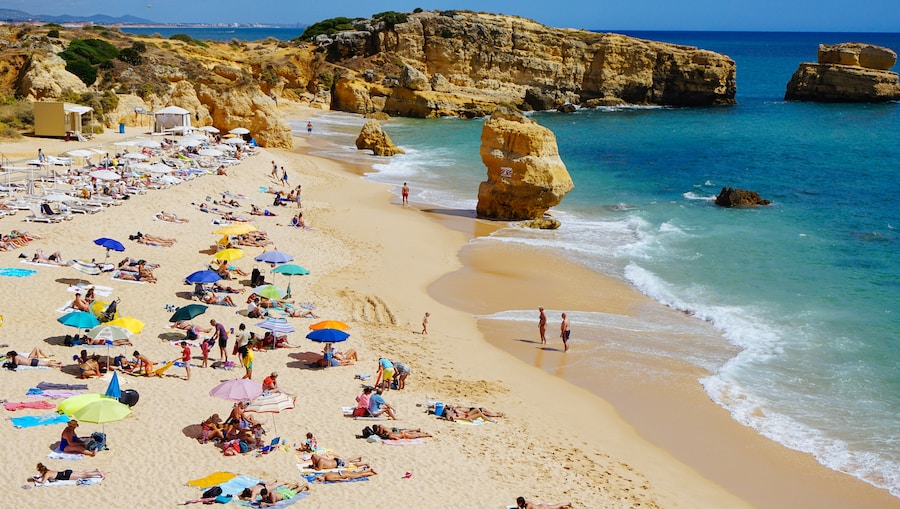<!-
- wp:paragraph –>
Mexico City, the capital of Mexico and one of the largest cities in the world, is uniquely positioned in the Valley of Mexico at an elevation of approximately 2,240 meters (7,350 feet) above sea level. This high altitude significantly influences its climate, setting it apart from other cities located at similar latitudes. Understanding how elevation affects temperature, weather patterns, and air quality is crucial for appreciating the city’s unique environmental characteristics.
Elevation of Mexico City
- Altitude Overview: Mexico City is situated at about 2,240 meters (7,350 feet), making it one of the highest major cities globally.
- Significance of Elevation: The high elevation contributes to various climatic phenomena, influencing temperature moderation, rainfall patterns, and air quality.
Impact of Elevation on Temperature
- Cooler Temperatures: Higher elevations generally experience cooler temperatures. Despite being in a tropical region, Mexico City maintains a mild climate year-round.
- Moderation of Heat: Unlike coastal cities at similar latitudes that endure high temperatures, Mexico City’s altitude results in average temperatures ranging from 12°C (54°F) in the morning to about 24°C (75°F) during the day.
- Daytime and Nighttime Variations: The city enjoys warm days but experiences cooler nights due to rapid heat loss at higher altitudes.
Effects on Rainfall and Seasons
- Distinct Dry and Wet Seasons: Mexico City has a dry season from November to April and a wet season from May to October.
- Rainfall Patterns: The elevation causes moist air to rise over surrounding mountains, leading to condensation and precipitation during the wet season.
- Lower Humidity: Compared to lower-elevation tropical regions, Mexico City has lower humidity levels due to its altitude, enhancing its comfortable climate.
Impact on Air Pressure and Oxygen Levels
- Lower Air Pressure: The high elevation results in decreased atmospheric pressure, which can lead to altitude sickness for visitors unaccustomed to such heights.
- Reduced Oxygen Levels: Thinner air means less oxygen is available, affecting physical exertion. While long-term residents adapt well, visitors may find outdoor activities like hiking or sports more challenging until they acclimatize.
Effect on Air Quality
- Challenges of Air Pollution: Despite cooler temperatures, Mexico City’s elevation can exacerbate air quality issues.
- Geographical Impact: The city’s location in a valley surrounded by mountains can trap pollutants, leading to smog formation.
- Temperature Inversions: The combination of high elevation and valley geography can create temperature inversions that trap cooler polluted air near the surface, particularly during winter months.
Comparisons with Other High-Elevation Cities
| Aspect | Mexico City | Bogotá |
|---|---|---|
| Elevation | 2,240 meters (7,350 feet) | 2,625 meters (8,643 feet) |
| Average Temperature | 18°C (64°F) | 14°C (57°F) |
| Climate | Mild year-round | Cooler with more rainfall |
- Comparison with Bogotá: Both cities experience mild climates due to their high elevations but differ slightly in temperature and rainfall patterns.
- Contrast with Lower-Elevation Cities: Cities like Cancun or Acapulco have warmer tropical climates due to their significantly lower elevations.
Frequently Asked Questions (FAQs)
- Q1: Why is Mexico City cooler than other cities at the same latitude? A1: Its high elevation leads to cooler temperatures compared to other tropical cities at lower altitudes.
- Q2: Does the high elevation cause any health issues for visitors? A2: Yes, visitors may experience altitude sickness due to lower oxygen levels and air pressure.
- Q3: How does elevation affect air quality? A3: The city’s elevation can trap pollutants due to geographical features, leading to smog and poor air quality.
- Q4: What are the main weather differences between Mexico City and coastal cities? A4: Coastal cities experience hotter temperatures year-round compared to the milder climate of Mexico City due to its altitude.
- Q5: Does Mexico City’s elevation make it more prone to rainfall during the wet season? A5: Yes, the elevation influences rainfall patterns by causing moist air to rise and condense over mountains.
Conclusion
In summary, Mexico City’s high elevation plays a pivotal role in moderating its climate. It leads to cooler temperatures, distinct seasonal patterns with dry and wet seasons, and unique challenges related to air quality. These factors contribute to making Mexico City’s climate distinct compared to other tropical regions. Understanding these dynamics provides insight into how geography shapes urban environments.

Kyle Whyte is a notable scholar and professor at the University of Michigan, holding positions such as the George Willis Pack Professor in the School for Environment and Sustainability and Professor of Philosophy. Specializing in environmental justice, his work critically examines climate policy and Indigenous peoples’ ethics, emphasizing the nexus between cooperative scientific endeavors and Indigenous justice. As an enrolled Citizen Potawatomi Nation member, he brings a vital perspective to his roles as a U.S. Science Envoy and member of the White House Environmental Justice Advisory Council. His influential research is supported by various prestigious organizations including the National Science Foundation, and disseminated through publications in high-impact journals. Kyle actively contributes to global Indigenous research methodologies and education, with affiliations to numerous institutes and societies dedicated to traditional knowledge and sustainability. Recognized for his academic and community engagement, Kyle has earned multiple awards and served in various visiting professorships. His efforts extend to leadership positions on boards and committees focused on environmental justice nationwide.
